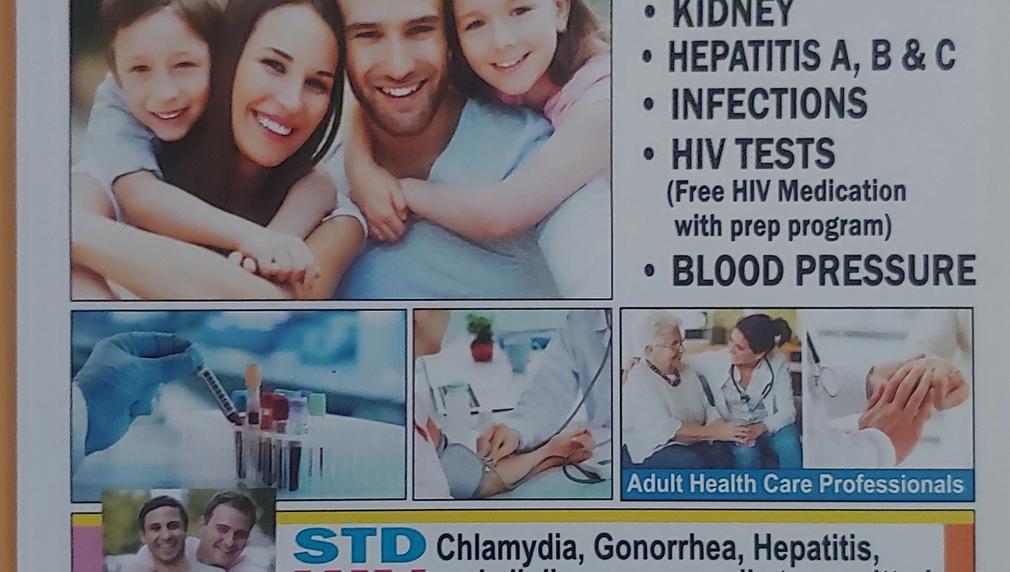Uninsured Patient Care Program Increased Access
Our Uninsured Patient Care Program began in 2016 responding to the growing number of uninsured residents visiting our clinic. BANJ serves as a medical home to more than 2,000 low income, minority, uninsured and homeless patients. We utilize a sliding fee schedule based upon current federal poverty level guidelines. The average fee for a clinic visit is $24.00. No patient is denied medical care based upon their income or ability to pay. We also provide basic lab and x-ray services for the uninsured at no additional cost for those unable to pay.

What is the primary issue area that your application will impact?
Health Care Access
In which areas of Los Angeles will you be directly working?
Central LA
East LA
South LA
South Bay
County of Los Angeles
In what stage of innovation is this project, program, or initiative?
Expand existing project, program, or initiative
What is your understanding of the issue that you are seeking to address?
It's been well documented that restricted access to primary care medical services results in higher disease morbidity and mortality. Countless research studies have determined that increasing access to qualified medical providers improves overall health status. It's also been well documented that minority populations, specifically Blacks and Hispanics historically have experienced the highest rates of limited access to medical care due to lack of insurance. (Medical Debt in L.A.County; Baseline Report, 2023.) Our program has demonstrated concrete, measurable results and improvement in two of the most critical and cost intensive areas of healthcare, unnecessary emergency room use and avoidable hospitalizations. We have been tracking these two key cost indicators for our enrolled patients and we are proud to report lower emergency room use and reduced hospitalization rates when compared to the State of California's Medi-Cal program or the state's general uninsured patient population.
Describe the project, program, or initiative this grant will support to address the issue.
Our U.P.C.P. was created to address the increase in the number of uninsured and homeless individuals visiting our clinic locations over the past several years. The numbers continue to increase in the post pandemic period as the effects of increased inflation and public sector health coverage eligibility restrictions continue to affect enrollment. Our program treats non-emergent, primary care medical needs of uninsured adults and children regardless of race, ethnicity or citizenship status. We provide a full range of adult and pediatric medical services, pre-natal care, general ob-gyn services. We also provide all required immunizations, treatment for STD, HIV, covid exposure as well as basic diagnostic lab testing, limited x-ray services. We participate in a special St. of California PrEP program which offers patients at high risk of contracting HIV an approved prophylactic to prevent further HIV contagion. Each new uninsured patient coming to our clinic is screened for medical necessity, urgentness and also screened for eligibility into our program. Patients who are elgible for Medi-Cal, Medicare, one of the Covered California health insurance programs are referred to the appropriate agencies for enrollment. Each approved uninsured patient is also given an income verification status. Once income or lack of income is established we apply our sliding fee schedule based upon current federal poverty level guidelines. The average reduced clinic visit fee is currently $24.00
Describe how Los Angeles County will be different if your work is successful.
Grant funding would allow us to expand the number of new uninsured and homeless patients over a 12 month period. We project a total of a minimum of 110 new uninsured patients will be enrolled in our program and be treated. BANJ's clinic visit utilization amongst the uninsured/homeless patient population is significantly higher than our medically insured, managed care patients. This higher utilization is directly linked to higher rates of diabetes, obesity, hypertension, COPD and other chronic diseases which have been neglected and gone untreated for years. Each new enrolled patient under goes a comprehensive physical examination complete with a basic chem - 20 panel of lab tests. Our medical providers are able to ascertain the patient's current health status and create a comprehensive treatment plan for each patient. Patients with urgent medical needs requiring specialty care are being referred to either M.L.K. Medical Center in Willowbrook or St. Francis Medical Center in Lynwood.
What evidence do you have that this project, program, or initiative is or will be successful, and how will you define and measure success?
As stated earlier, BANJ H.C. has been tracking and documenting both the number of emergency room visits and the number of hospitalizations attributed to the uninsured patients registered with our medical clinic. This painstaking data tracking over time has produced consistent results. First, our rate and frequency of emergency room visits and the number of hospital admissions and days spent in the hospital continue to fall below the published State of California's Medi-Cal Program as well as the Insitute for the Uninsured Patient Program's own data tracking for these two key critical healthcare cost expenditures. Further, we have demonstrated a reduced outpatient cost per visit when compared to free standing urgent care centers, outpatient departments attached to community hospitals and in a few select instances, federally qualified health centers serving the greater L.A. area. Note: Our data has not been statistically validated however, we remain confident in our internal results.
Approximately how many people will be impacted by this project, program, or initiative?
Direct Impact: 110
Indirect Impact: 500